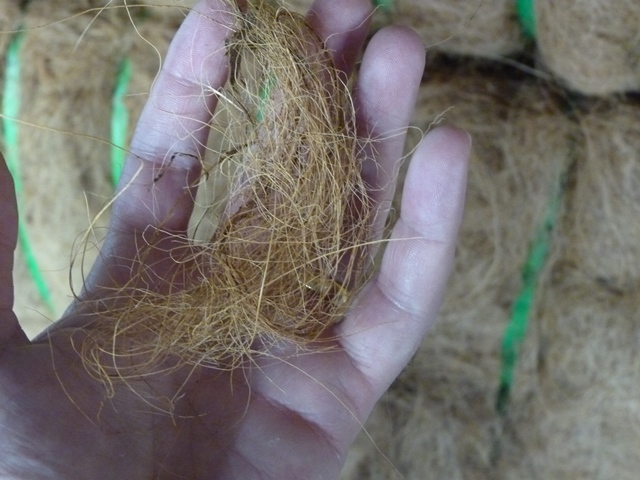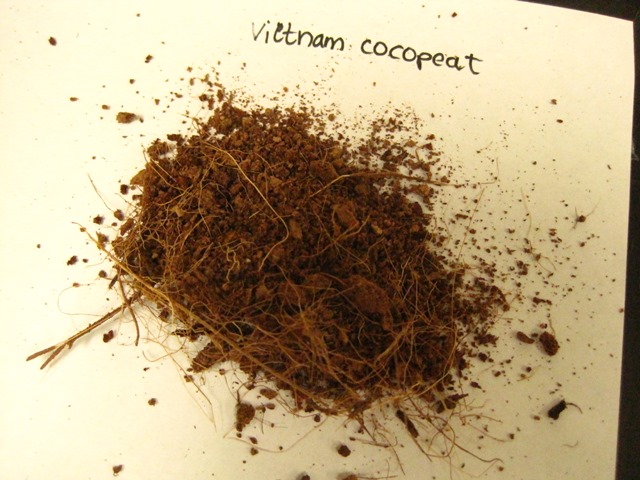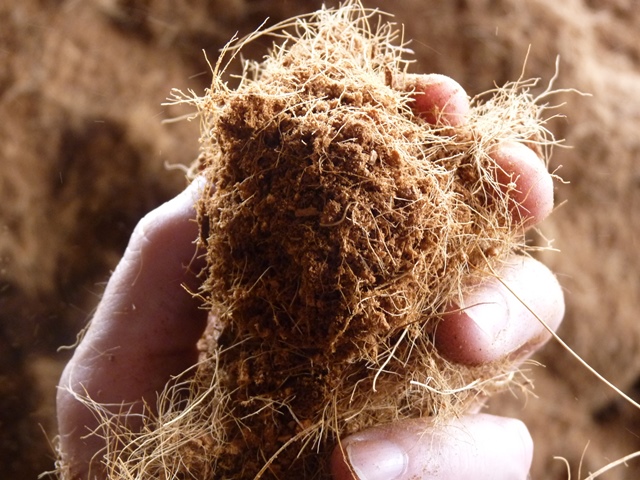Practitioner's Tool / Cocopeat - Selecting Proper Grades for Use in Biotreatment Systems
Cocopeat is the dust from crushed coconut husks once the fibers (coir) are removed. Selecting the proper grade for use in bioreactors as components of wastewater treatment systems is important. The crushed husk fragments shown to the right are first sun dried for several days. Once dry, the fragments are fed into a shredding machine that separates the fibers.
There are many types of shredding machines. These remove between 70% and 90% of the fibers and leave behind the cocopeat with chunks of husk and some fibers. This raw cocopeat waste material is typically left over as a waste produce with little value. For RTI's cocopeat study, which is being funded by the Bill and Melinda Gates Foundation's Grand Challenges Explorations initiative, the raw cocopeat waste is being utilized. It is the material that is readily available with minimal processing. It is postulated that the larger particles and remaining fibers in the material help to transmit the effluent through the filter. This cocopeat material is from a coconut processing plant in Quezon Province, Philippines, and is being used in our test facilities in Muntinlupa city.
The photo on the left shows the coir fibers. The image on the right shows the raw cocopeat waste product that is used for biofilter construction. It contains between 10% and 30% fibers and larger particles of the coconut shell.
Images of cocopeat from Vietnam. It is the raw cocopeat material with some fibers and pieces of shell. This material is currently being tested in the Duke University cocopeat trials.




